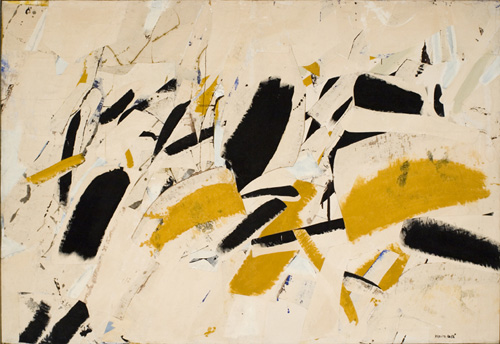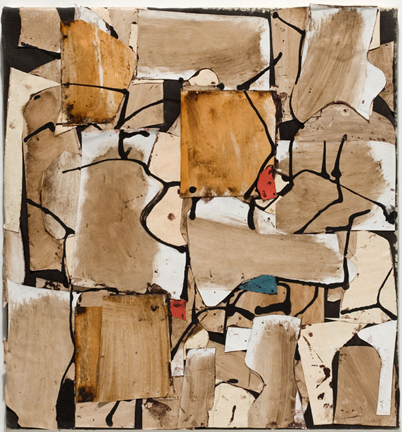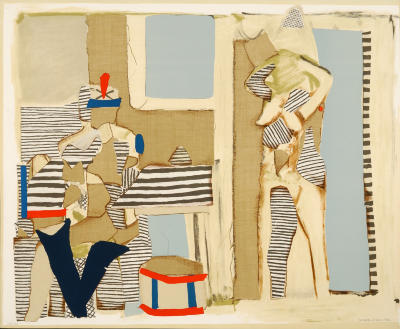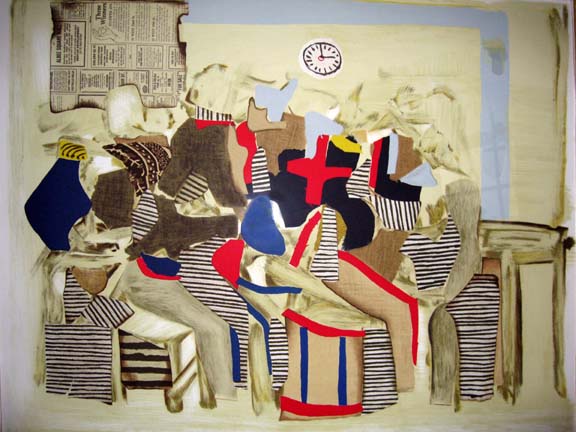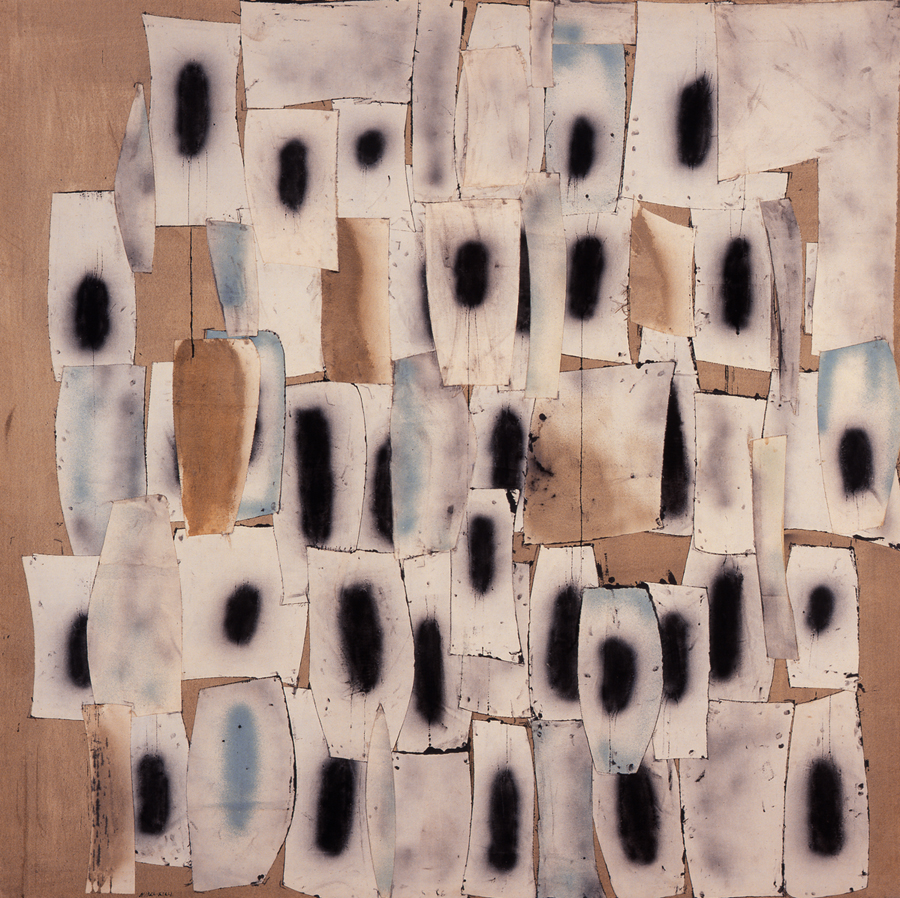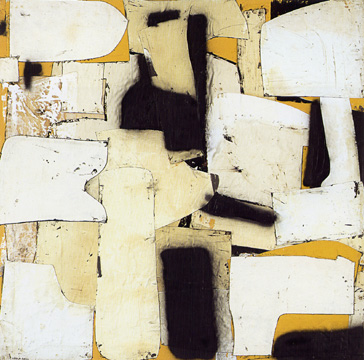<Back to Index>
- Painter Irving Kriesberg, 1919
- Painter Conrad Marca-Relli, 1913
PAGE SPONSOR
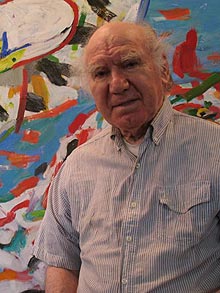
Irving Kriesberg (March 13, 1919 – November 11, 2009) was an American painter whose work combined elements of Abstract Expressionism with figurative elements of human and animal forms. Kriesberg made his debut with Jackson Pollock and Mark Rothko at the 1952 exhibition, Fifteen Artists, at the New York Museum of Modern Art.
Irving Kriesberg was born March 13, 1919 in Chicago, IL Kriesberg's interest in art began in Chicago. In 1941 he studied at the Art Institute of Chicago School, where he received his BFA. Shortly after graduation from the Art Institute of Chicago he traveled to Mexico City. From 1941 until 1944 he studied at the Escuela Nacional de Artes Plasticas, Mexico City. He had an interest also in cinematography.In 1972 he received his M.A. from New York University.
Irving Kriesberg held teaching positions in highly regarded academic institutions:
- 1955 - 1961: Parsons School of Design, New York City
- 1961 - 1972: Pratt Institute, NY
- 1962 - 1969:Yale University
- 1969 - 1972: City University of New York
- 1972 - 1976: State University, NY
- 1977, 1978: Columbia University
In 1945 Irving Kriesberg moved to New York City and had
numerous solo and group exhibitions. His big break came
when Dorothy Miller,
curator of the Museum of Modern Art included Kriesberg in
the landmark 1952 exhibition 15 AMERICANS at MOMA. 15 AMERICANS
exhibition included Jackson Pollock, William Baziotes,
Clifford Still, Edward Corbett, Richard Lippold, Herbert
Ferber, Mark Rothko, Bradley Walker Tomlin, as well as
Edwin Dickinson and Frederick Keisler.
Kriesberg was the featured subject in the documentary -
short Tashilham, from
filmmakers Shari Robertson and Michael Camerini. In the
film, Kriesberg and his friend "the therapist"
(anthropologist Judith Gleason) take "a fortunate
journey"; the film documents their discussion and debate
about a narrative series of 39 interrelated paintings by
Kriesberg. He explains the motives and the meanings for
the evocative and boldly colored paintings. The film was
broadcast on Muse in
1997.
Irving Kriesberg's paintings are held in the permanent collection of over 74 American art museums including The Museum of Modern Art, The Whitney Museum of American Art, The Corcoran Gallery, The Brooklyn Museum, The Detroit Museum of Art, The Kresge Art Museum, the National Museum of American Art, The Butler Institute of American Art, The Birmingham Museum of Art, The Jewish Museum, The University of Michigan Museum of Art, The Dayton Art Institute, The Allentown Art Museum, The Boca Raton Museum of Art, The Rose Art Museum, The Kemper Museum of Contemporary Art, The Scottsdale MOCA, The Crocker Art Museum.
Irving Kriesberg died in New York City on November 11, 2009 at age 90.
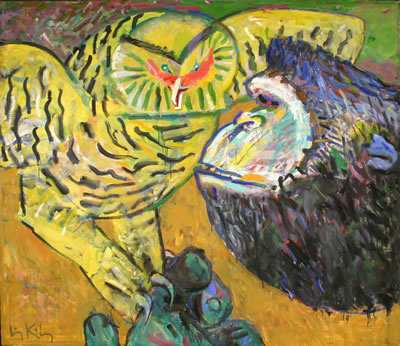
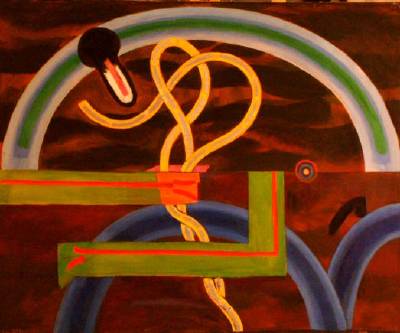
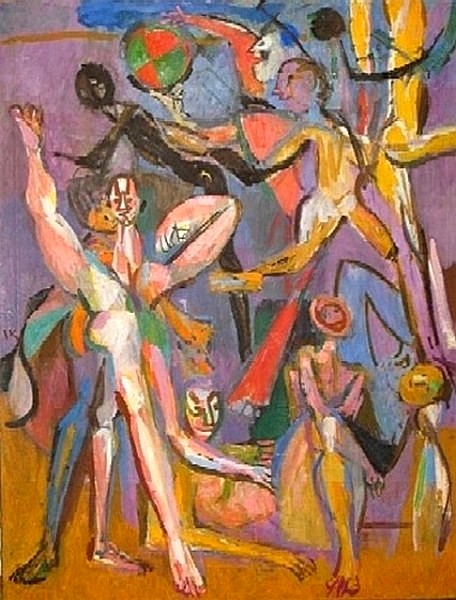
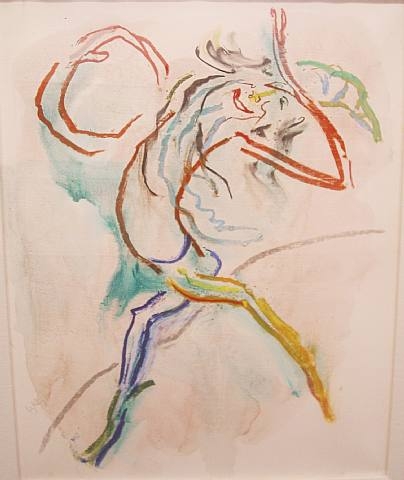
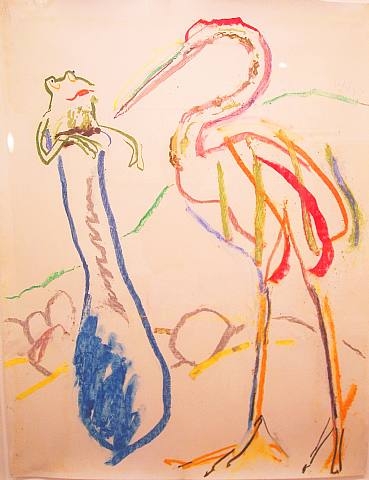
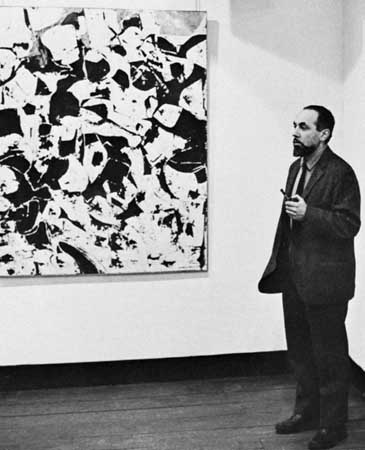
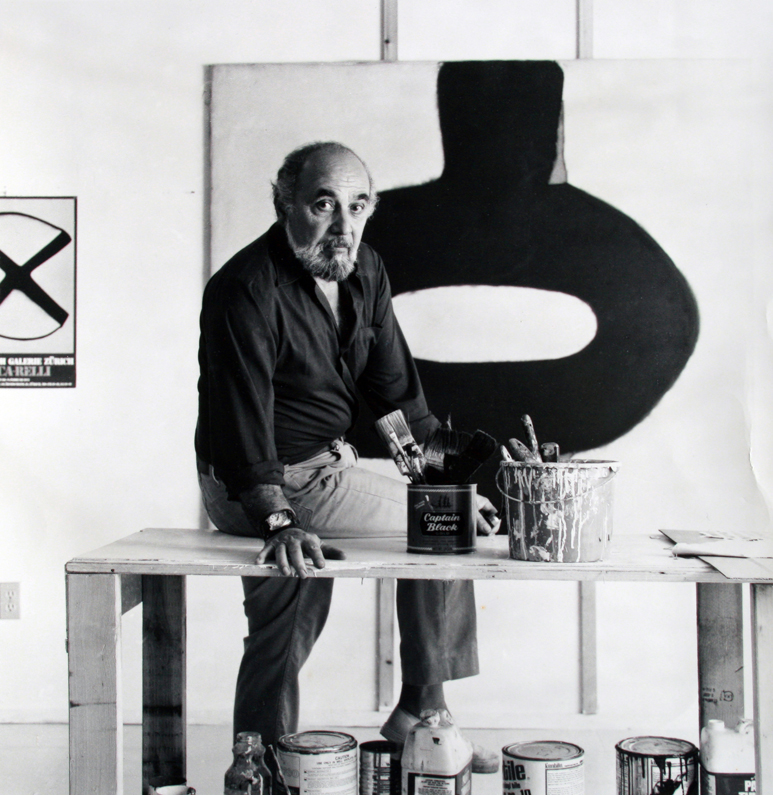
Conrad Marca - Relli (born Corrado Marcarelli; June 5, 1913 Boston – August 29, 2000 Parma) was an American artist who belonged to the early generation of New York School Abstract Expressionist artists whose artistic innovation by the 1950s had been recognized across the Atlantic, including Paris. New York School Abstract Expressionism, represented by Jackson Pollock, Willem De Kooning, Franz Kline, Marca - Relli and others became a leading art movement of the postwar era.
Marcarelli (he changed the spelling later in life) was born in Boston and, with his father Cosimo, brother Ettore, and sisters Dora and Ida, moved to New York City when he was 13. In 1930 he studied at the Cooper Union for a year. He later supported himself by working for the Works Progress Administration, first as a teacher and then with mural painting divisions of the Federal Art Project during this period he won the Logan Medal of the arts. He served in the US Army military service during World War II (1941 – 1945).
Marca - Relli taught at Yale University from 1954 to 1955 and from 1959 to 1960, and at the University of California at Berkeley. In 1953, he bought a house near Jackson Pollock's home in Springs, East Hampton. As his career progressed, he increasingly distanced himself from the New York School.
He lived and worked in many countries around the world,
moving to Parma, Italy, with his wife, Anita Gibson, whom
he married in 1951. Conrad Marca - Relli died on August
29, 2000, in Parma, at the age of 87.
After the war Marca - Relli joined the "Downtown Group" which represented group of artists who found studios in lower Manhattan in the area bounded by 8th and 12th street between First and Sixth Avenues during the late 1940s and early 1950s. During the late 1940s and early 1950s, he was actively involved in the avant garde art world in Greenwich Village. These artists were called the "Downtown Group" as opposed to the "Uptown Group" established during the war at The Art of This Century Gallery.
His first one man show was in New York City in 1948. In 1949 Marca - Relli was among the founders of the "Artists' Club" located at 39 East 8th Street. He was selected by his fellow artists to show in the Ninth Street Show held on May 21 - June 10, 1951. The show was located at 60 East 9th Street on the first floor and the basement of a building which was about to be demolished.
The artists celebrated not only the appearance of the dealers, collectors and museum people on the 9th Street, and the consequent exposure of their work but they celebrated the creation and the strength of a living community of significant dimensions.
Conrad Marca - Relli was among the 24 out of a total 256 New York School artists included in the Ninth Street Show and in all the following New York Painting and Sculpture Annuals from 1953 to 1957. These Annuals were important because the participants were chosen by the artists themselves.
Marca - Relli's early cityscapes, still lifes, circus themes and architectural motifs are reminiscent of Italian surrealist painter Giorgio de Chirico. Throughout his career, Marca - Relli created monumental - scale collages. He combined oil painting and collage, employing intense colors, broken surfaces and expressionistic spattering. He also experimented with metal and vinyl materials. Over the years the collages developed an abstract simplicity, evidenced by black or somber colors and rectangular shapes isolated against a neutral backdrop.
In 1967, the Whitney Museum of American Art gave him a retrospective show.
The Archivio Marca - Relli, which was established by the artist and Galleria d'arte Niccoli in Parma in 1997, collects information about Conrad Marca - Relli and archives his work for a future general catalog.
